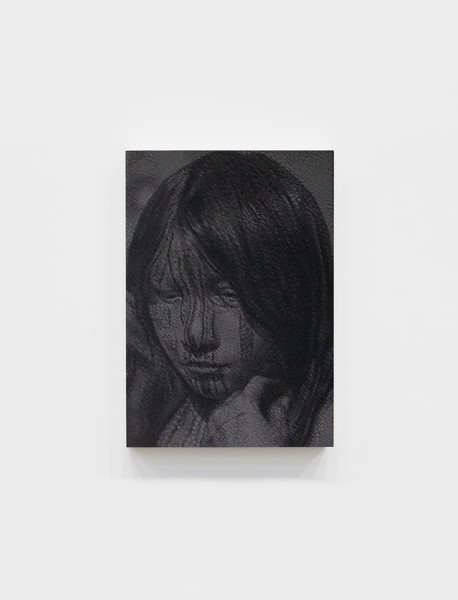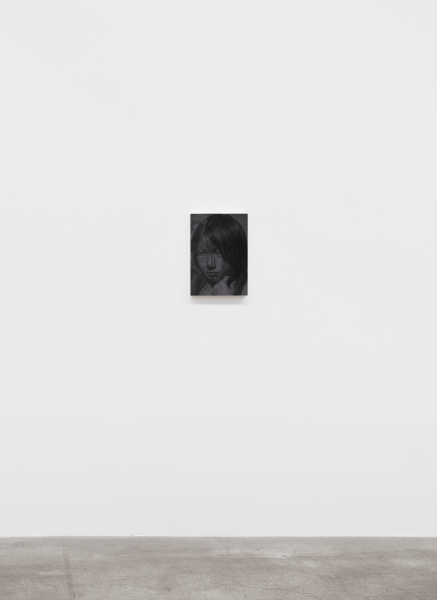Xavier Robles de Medina
Wayana facial painting. French Guyana. 1953. (source: Dominique Darbois)
The threshold between looking and intruding is where we begin with Wayana facial painting. French Guyana. 1953. (source: Dominique Darbois). The artist’s examination of this image is personally driven, as the Wayana inhabited parts of Brazil, French Guyana, and Robles de Medina’s home of Suriname long before the European colonial project reached the northern shores of South America.
The photographic source depicts a young girl engaging with the European ethnographer behind the lens. Robles de Medina has cropped the original format, which shows her bare chested. By extracting the image from its original frame, the emphasis shifts to the line painting on the girl’s face, which shares a certain vernacular with maps—those same maps that led French ethnographers to French Guyana to “capture” Robles de Medina’s source photo.
This painting separates itself from the girl’s facial painting in its literal detachment from the subject. It also doesn’t quite read as a map, even if Robles de Medina paints on a grid and uses the same measuring techniques that would be used to make one. This lends an intriguing ambiguity to the painting, especially considering the artist’s intricate process and the work’s inherent tenderness.

